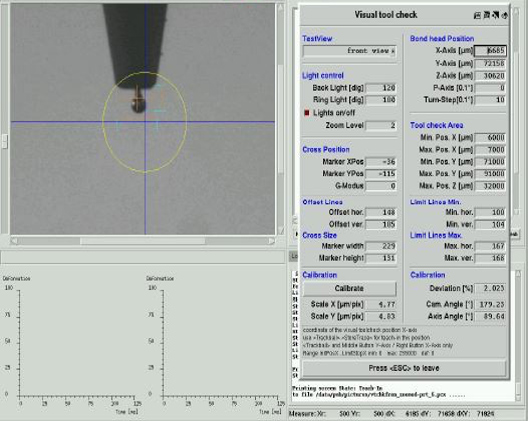Automatic ball bonding is the quickest form of wire bonding as it is not limited, like wedge bonding, to having the wire loop made in as straight a line as possible with the initial bond so reduces die movements. It is less prone to cratering where damage occurs to the semiconductor below the bond pad but has the disadvantage of heating the die. Gold wire to gold bond pads are highly reliable but intermetallic contamination can lead to poor bond strength often referred to as Plague for combinations such as gold wire to aluminium pads. For packaging applications, ball bonding is often used where high throughput is required.
Ball Bonding Work Flow
Ball Formation
In ball bonding, the wire is fed through a tool or capillary, the characteristic of the chosen capillary has a strong influence on how the ball bond is formed. In the first step the Electronic Flame Off (EFO) melts the wire forming a ball at the tip of the capillary. The capillary is placed into the bond position by the wire bonder.
Ball Bonding at our Facility
The advanced packaging facility has a semi-automatic TPT HB16 and fully automated F&K Delvotec 6200 Gold Ball Wire bonder both of which can undertake ball bonding. The fully automated F&K Delvotec 6200 provides the ability for in situ bond quality monitoring which is displayed directly to the operator providing information on bond deformation and allowing adjustment of time optimisation to give much higher degree of control of the bond process.
